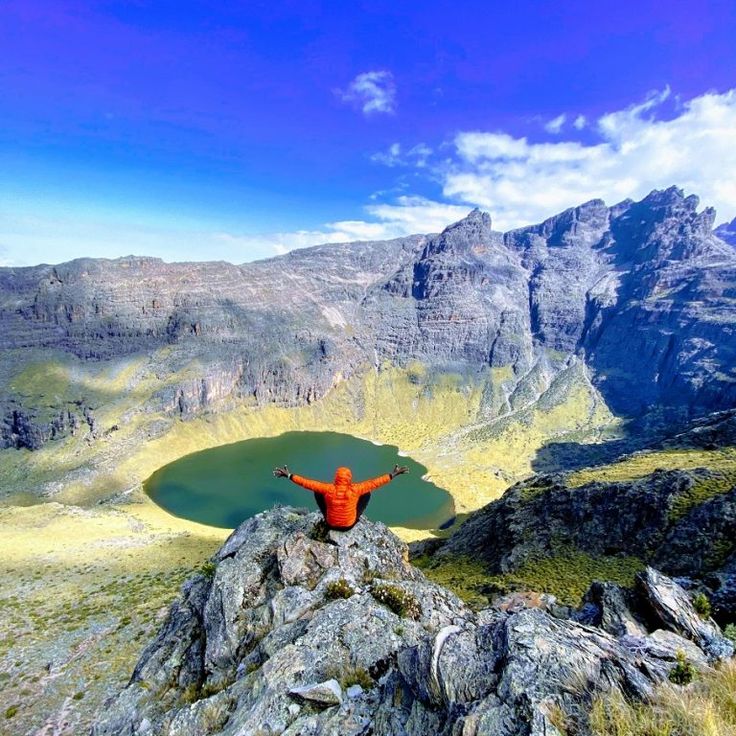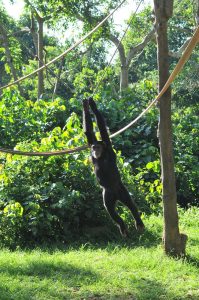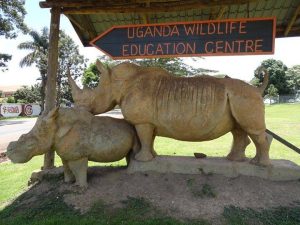Kenya is a land of diverse landscapes, from sweeping savannahs and lush forests to dramatic mountain ranges and volcanic craters. Beyond its world-renowned safaris, Kenya offers incredible opportunities for mountain climbing and hiking. Whether you are an experienced mountaineer aiming to summit Mount Kenya or a casual hiker seeking scenic trails near Nairobi, Kenya provides unmatched outdoor experiences. Mountain Climbing and Hiking in Kenya
What are the best mountains to climb in Kenya?
Kenya is home to several mountains that attract both local and international climbers. The most famous is Mount Kenya, the second-highest mountain in Africa at 5,199 meters (17,057 feet). It features rugged peaks, glaciers, alpine lakes, and diverse vegetation zones. Its highest peaks, Batian and Nelion, require technical climbing, while the third-highest, Point Lenana (4,985 meters), can be reached by trekkers without technical gear.
Another notable peak is Mount Elgon, located on the Kenya–Uganda border. Rising to 4,321 meters, it offers gentler slopes compared to Mount Kenya and features caves, waterfalls, and extensive forests. The Aberdare Ranges provide steep, forested peaks rich in wildlife, while the Chyulu Hills offer volcanic scenery with rolling hills ideal for shorter treks. Each mountain provides a unique experience suited to different levels of climbers. Mountain Climbing and Hiking in Kenya
Can you climb Mount Kenya without experience?
Yes, Mount Kenya can be climbed without prior mountaineering experience, depending on the chosen route. While the twin peaks of Batian and Nelion require advanced rock climbing skills and technical equipment, Point Lenana is accessible to trekkers. Popular routes such as the Sirimon, Chogoria, and Naro Moru trails are designed for non-technical hikers who are physically fit.
Climbing to Point Lenana usually takes between 4–5 days, allowing time for acclimatization. Professional guides and porters are available, and most climbers are required to use them for safety and navigation. Even without prior climbing experience, many adventurers successfully summit Point Lenana every year, making it one of the most rewarding treks in East Africa. Mountain Climbing and Hiking in Kenya
How long does it take to climb Mount Kenya?
The duration of a Mount Kenya climb depends on the route selected. On average:
- Sirimon Route – 4 to 5 days.
- Naro Moru Route – 3 to 4 days (shorter but steeper).
- Chogoria Route – 4 to 6 days (scenic but longer).
- Combination Routes – 5 to 6 days (e.g., Sirimon up and Chogoria down).
Climbers are encouraged to take extra days for acclimatization to reduce the risk of altitude sickness. Unlike Mount Kilimanjaro, Mount Kenya is less crowded, providing a more intimate climbing experience with spectacular alpine scenery.
What is the best time of year to hike in Kenya?
The best time to hike and climb in Kenya is during the dry seasons:
- January to March – Clear skies, less rainfall, and great visibility.
- June to October – Cool, dry, and excellent for mountain climbing.
The long rainy season (April to May) and the short rains (November) make trails muddy and slippery, reducing visibility. While hiking is still possible, conditions are less favorable. Climbers targeting Mount Kenya and Mount Elgon often plan expeditions during dry months for safety and better trail conditions.
Are there beginner-friendly hikes in Kenya?
Yes, Kenya offers many beginner-friendly hikes suitable for families, casual hikers, and those new to trekking. Popular options include:
- Mount Longonot – A volcanic crater near Naivasha, offering a 3–5 hour hike with panoramic views.
- Ngong Hills – Just outside Nairobi, these rolling hills provide moderate hikes with scenic city and Rift Valley views.
- Karura Forest – An urban forest in Nairobi with marked trails, waterfalls, and caves, ideal for easy nature walks.
- Hell’s Gate National Park – Famous for its dramatic cliffs and gorges, where hiking and cycling are allowed due to the absence of dangerous predators.
These trails combine manageable difficulty with stunning scenery, making them excellent for beginners.
What are the most popular hiking trails near Nairobi?
Nairobi is surrounded by excellent hiking destinations within a short drive. The most popular include:
- Ngong Hills – A 7- to 9-kilometer hike across rolling terrain.
- Karura Forest – Perfect for morning or afternoon hikes, featuring rivers, caves, and a waterfall.
- Oloolua Nature Trail – Located in Karen, offering a peaceful forest hike along a river.
- Mount Longonot – About 90 minutes from Nairobi, providing a more challenging crater rim hike.
These trails allow city visitors to escape into nature without long travel times, making Nairobi a unique capital with immediate access to outdoor adventures.
Do you need a guide to climb Mount Kenya?
Yes, hiring a guide is highly recommended and often required to climb Mount Kenya. The terrain can be challenging, with steep sections, changing weather conditions, and high altitude risks. Licensed guides ensure safe navigation, provide first aid assistance, and help with logistics such as camping equipment and food preparation.
For Point Lenana treks, guides and porters enhance the experience by managing camp setups and allowing climbers to focus on the hike. For technical ascents of Batian and Nelion, professional climbing guides with technical equipment are essential.
How difficult is it to hike Mount Longonot?
Mount Longonot, located in the Great Rift Valley, is considered a moderately difficult hike. The trail begins at the park’s entrance and ascends steeply to the crater rim. Once at the top, hikers can choose to circle the entire rim, which takes about 2–3 additional hours.
In total, the hike typically lasts between 3 to 5 hours, depending on pace and whether the full crater circuit is completed. The terrain is dusty during dry months and slippery during rainy seasons. Despite the effort, the reward is panoramic views of the Rift Valley and Lake Naivasha.
What equipment do you need for hiking in Kenya?
The equipment required depends on the type of hike. For day hikes like Longonot or Ngong Hills, essential gear includes:
- Comfortable hiking boots.
- Hat, sunscreen, and sunglasses.
- Water bottles or hydration packs.
- Light jacket or raincoat.
For multi-day climbs such as Mount Kenya or Mount Elgon, additional equipment is necessary:
- Warm clothing for high-altitude conditions.
- Sleeping bag and tent (if not provided by tour operator).
- Trekking poles.
- First aid kit.
- Headlamp for early summit attempts.
Proper preparation ensures comfort and safety during Kenya’s diverse hiking conditions.
Are permits required to hike or climb mountains in Kenya?
Yes, most mountains and hiking destinations in Kenya require permits or park entry fees. For example:
- Mount Kenya National Park – Entry fee is required, with higher charges for international visitors.
- Mount Longonot National Park – A fee applies, payable at the gate.
- Hell’s Gate and Aberdare National Parks – Entry fees are charged per person.
- Karura Forest – Charges a small entry fee for maintenance.
Permits help support conservation and ensure sustainable tourism. For Mount Kenya, guides usually arrange all permits in advance.
What wildlife can you see while hiking in Kenya?
Kenya’s hiking trails often pass through wildlife-rich areas. On Mount Kenya and the Aberdares, hikers may encounter elephants, buffalo, antelope, and various primates, though sightings depend on altitude. The forests also host diverse bird species.
In Hell’s Gate National Park, hikers and cyclists can safely see giraffes, zebras, gazelles, and baboons. Karura Forest in Nairobi is home to monkeys, bushbucks, and butterflies. While most wildlife encounters are safe, hikers should remain alert, follow guide instructions, and avoid approaching large animals.
How much does it cost to climb Mount Kenya?
The cost of climbing Mount Kenya varies depending on the route, duration, and level of service. On average:
- Budget treks: USD 400–600 per person (basic camping, shared services).
- Mid-range treks: USD 700–1,200 (better accommodations, full support team).
- Luxury treks: USD 1,500+ (high-end lodges, private guides, and upgraded services).
Prices typically include park fees, guides, porters, meals, and accommodation. Extra costs may include personal gear rental, tips, and transport to the park.
Is Mount Elgon good for hiking in Kenya?
Yes, Mount Elgon is an excellent hiking destination, particularly for those seeking a less crowded alternative to Mount Kenya. Its slopes are gentler, making the trek less physically demanding, and its forests and caves add variety to the experience.
Highlights include the Kitum Cave, famous for elephants that dig into its walls to mine salt, and the Endebess Bluff, offering sweeping views. With fewer climbers and extensive natural beauty, Mount Elgon provides a tranquil hiking adventure.
What are the safest hiking trails in Kenya?
Kenya offers many safe hiking trails, especially in designated national parks and forests. Trails such as Karura Forest, Ngong Hills, and Mount Longonot are well-marked and frequently visited. Hell’s Gate National Park is particularly safe for hiking due to the absence of large predators.
Safety precautions include hiking with a guide, carrying adequate water, and avoiding isolated areas. Mount Kenya and Aberdares require experienced guides due to challenging terrain and wildlife presence. With proper planning, hiking in Kenya is both safe and rewarding.
Can hiking in Kenya be combined with camping?
Yes, hiking in Kenya can be combined with camping, enhancing the adventure. On Mount Kenya and Mount Elgon, climbers camp at designated sites along the routes. The Aberdares also have forest camping areas.
For shorter hikes, camping is possible in parks like Hell’s Gate, where campsites offer facilities such as showers and fire pits. Families and groups often enjoy camping after day hikes, combining outdoor adventure with stargazing and evening campfires.
Final Thoughts
Mountain climbing and hiking in Kenya provide extraordinary opportunities to explore Africa’s dramatic landscapes beyond traditional safaris. From summiting Mount Kenya to walking through Karura Forest or cycling in Hell’s Gate, Kenya caters to adventurers of all levels. With proper preparation, guided support, and respect for nature, hiking in Kenya is both safe and unforgettable.




